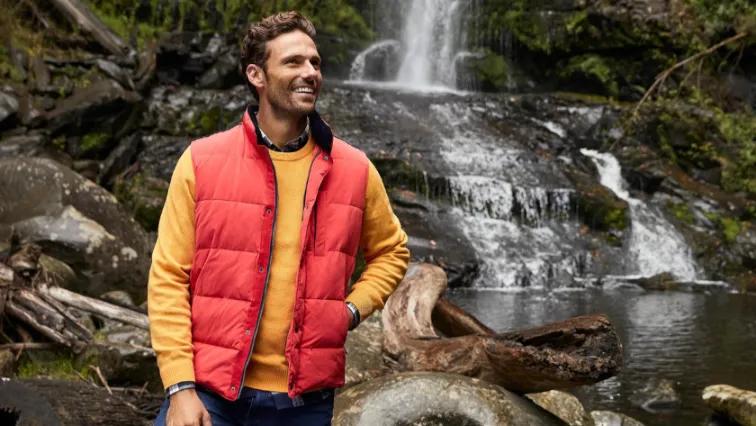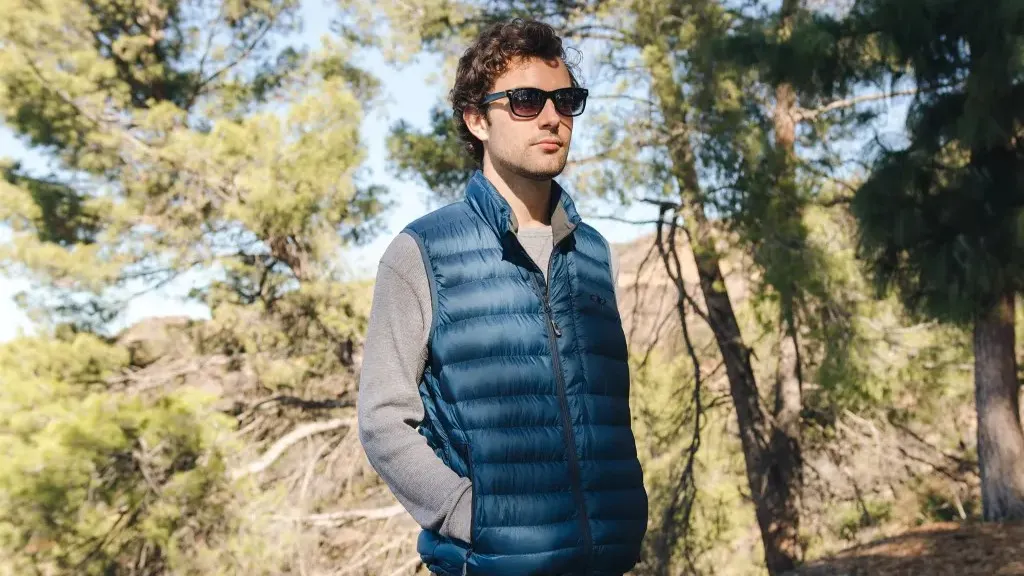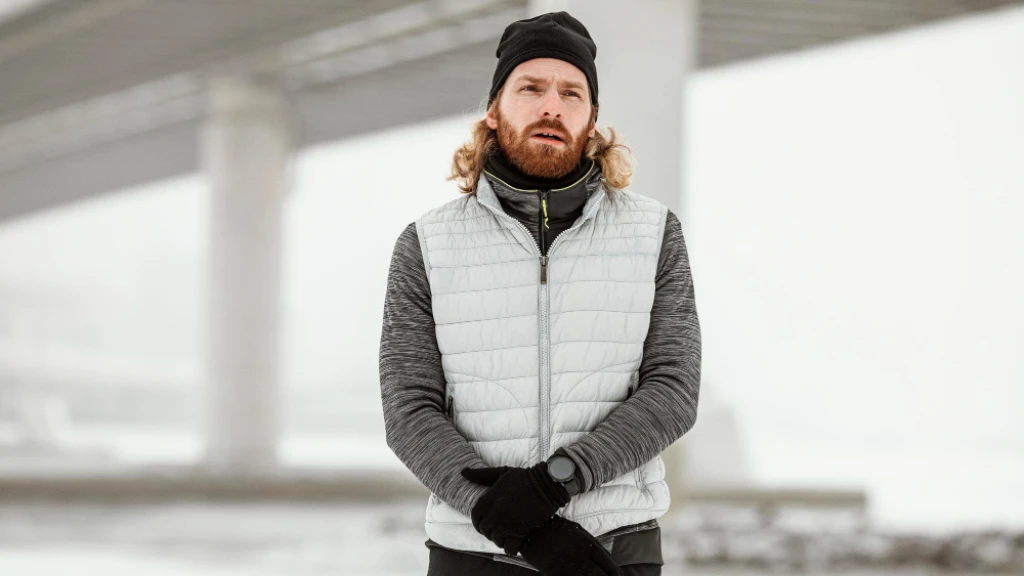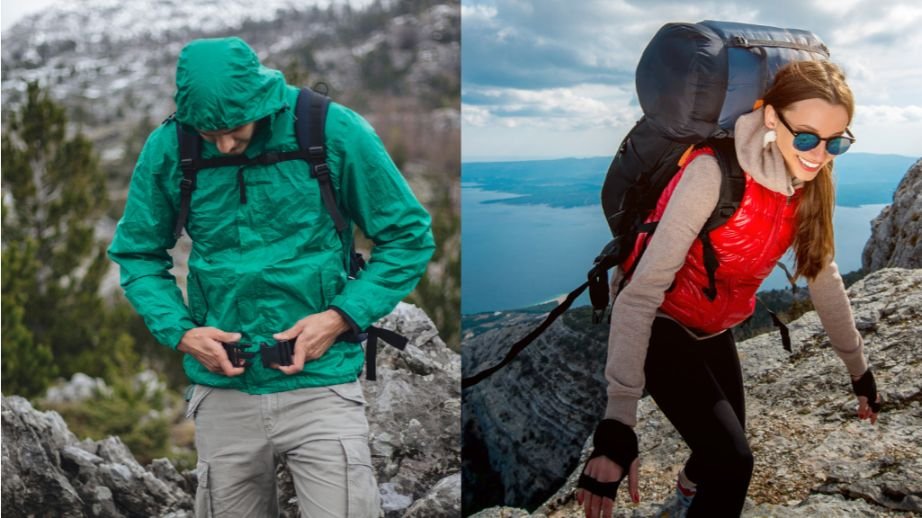For the longest time, I was absolutely oblivious to the benefits of hiking vests. I heard some recommendations from friends, but I strutted past them like they were invisible.
It wasn’t until my wife surprised me with a Patagonia Nano Puff vest a few years back that my eyes were truly opened and I haven’t looked back since.
There’s a good chance you might be where I was – on the fence or maybe not even considering a vest for your hikes. And I’m here to change that mindset.
Over the years, I’ve clocked hundreds of miles with my vests, and I’ve pinpointed their main benefits in this article that have made each hike more enjoyable than the last.
5 Benefits of Wearing a Hiking Vest

#1 – Core Temperature Management
Vests are designed to keep your core warm while letting your arms move freely. This is essential because your core houses vital organs that need to stay warm for your body to function optimally.
You might not realize it, but during a hike, our bodies are like little engines, generating heat.
Did you know that when hiking at a pace of 3km per hour, our bodies generate around 200 Watts of heat? And this ramps up to 250 Watts when we push the pace to 6 km per hour! That’s a lot of heat, especially in variable weather conditions.
The design of vests allows for excellent ventilation, helping to release that excess heat your body is producing. This means you stay comfortable without having to stop and adjust your layers constantly.
Why is this so important?
Overheating can lead to sweating, which in turn can make you dehydrated faster than you’d think. And on the flip side, if your core gets too cold, you’re at risk of hypothermia, especially in colder climates.
#2 – Versatility in Layering
The secret to staying just the right amount of warm or cool lies in wearing vests over a base layer or under a shell.
Over a Base Layer
Wearing a vest over a base layer allows for better temperature regulation. As mentioned earlier, vests are great at allowing heat to escape while keeping your core warm. By wearing it over a moisture-wicking base layer, you can stay dry and comfortable during high-exertion activities.
Under a Shell
When the sky decides to open up, or the wind picks up speed, layering your vest under a shell (like a waterproof jacket) creates an unbeatable combo. Your shell protects you from the elements, while the vest insulates your core, keeping you warm without overheating.
#3 – Lightweight and Space-Saving
Typical hiking vests weigh in at about 200 to 400 grams (7 to 14 ounces). That might not mean much until you compare it to your standard jacket or heavy sweater, which are usually twice as heavy or more.
Suddenly, those ounces translate into precious energy saved – energy you could be using to enjoy the view or push for that extra mile. A lighter load also means less strain on your back, knees, and feet.
Saving Space Like a Pro
We’ve all faced the dilemma of what to pack and what to leave behind. With a hiking vest, you’re getting warmth without the bulk.
The first time I swapped my bulky outer layer for a vest, it was like I had a whole new backpack. Suddenly, I had space for my camera and a small tripod – luxuries I could never fit before.
#4 – Durability and Longevity
The secret to a vest that stands the test of time (and weather) lies in its materials. Most top-notch hiking vests boast materials like ripstop nylon, polyester, and even specialized blends that are water-resistant and can take a beating from wind, rain, and the occasional scrape against rocks.
A durable hiking vest might cost more upfront, but think of it as buying peace of mind. A cheap vest might fall apart after a few trips, leading you to buy another…and another. Over time, you spend more than if you had invested in a quality vest from the get-go.
A few years ago I spent about $300 on three different hiking vests, each under $100. The first one tore on a bushwhacking trip, the second one lost its insulating power after a couple of washes, and the third one’s zippers broke halfway through a winter hike.
In contrast, my friend bought one vest for $210 (Arc’teryx Atom Vest) and has been using it for over 5 years without any issues.
Tips for Vest Care
To ensure your vest lives a long and happy life, here are some care tips that are often overlooked:
- Read the label: The manufacturer knows best when it comes to caring for their product.
- Gentle wash cycles: Tough doesn’t mean indestructible. Use gentle cycles and avoid harsh detergents to keep the fibers intact.
- Air dry when possible: High heat from dryers can weaken fibers over time. If you can, air dry your vest to preserve its integrity.
- Regular checks: Before and after trips, give your vest a once-over. Look for any tears or wear and address them immediately to prevent bigger issues down the line.
#5 – Convenient Storage Solution
Hiking vests come loaded with two, three or even four deep pockets designed to carry everything you might need within arm’s reach. The freedom to move without being weighed down by a heavy backpack, yet having all your essentials just a zip away, transforms your hike.
Making the Most of Your Vest’s Storage
Here are a few tips to elevate your vest storage game:
- Pack Smart: Distribute weight evenly across pockets to maintain balance.
- Prioritize Access: Keep the most-used items in the easiest-to-reach pockets.
- Safety First: Ensure sharp objects like knives are securely stored and capped.
- Regular Checks: Before setting out, check all zippers and closures to avoid surprises.
Conclusion
Like any piece of hiking outfit, vests aren’t a one-size-fits-all solution. Some folks might shy away from them, mainly because their sleeveless design doesn’t scream “full protection.”
But on days when the weather is mild, not teetering into sub-zero territory, I always reach for my vest over a jacket. Why? Because they’re lightweight. Even if the day heats up more than expected, I can just pack it away without feeling like I’m hauling an extra load.
So, do vests have their limitations? Sure. But don’t all hiking clothes? The trick is knowing when they shine the brightest. For me, that’s pretty much any time the conditions are stable and not veering into extreme cold.

Lukas Heller
Hey there! I’m Lukas, co-founder of BigfootHiking.com, alongside my adventurous wife Martha. Originally from Germany, I landed in Phoenix, Arizona, in 2015, where I’ve been scouting out new trails ever since (though they’re getting scarce!). By day, I’m a software developer, but my heart belongs to hiking – I’m always plotting our next trip. When I’m not coding or on the trails, you’ll find me hanging out with our Pit Bull, Zeus.




